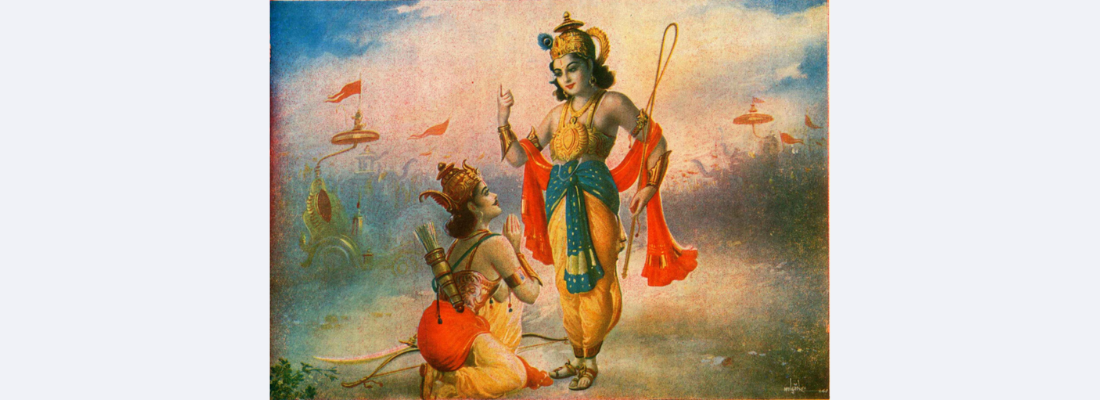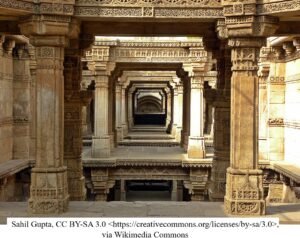सांख्य योग — देह – देह विवेक Sankhya Yoga — Deh – Deh Vivek
The Bhagwad Gita
Chapter 2 (1)
Sanjay Mehta
सांख्य योग
देह – देह विवेक
Saankhya Yoga
Deha – Deha Vivek
This portion (Shloka 11 onwards) is the beginning of the Bhagwad Gita teachings. Bhagwan explains the principle of Deha-Dehi Viveka (Body – Atman discrimination) which is unique to the tradition. The nature of Atman or Atma (Dehi) which is loosely translated in English as ‘soul,’ is explained here in detail. Atma has no physical form. It is imperishable in nature, for which there is no past, present and future.
श्री भगवानुवाच |
अशोच्यानन्वशोचस्त्वं प्रज्ञावादांश्च भाषसे;
गतासूनगतासूंश्च नानुशोचन्ति पण्डिताः || ११ ||
Ashochyaan anvashochastwam prajnaavaavaadaamshcha
Gataasoon agataasoomascha naanishochanti panditaah ||11||
Bhagwaan tells Arjun to strive to be a wise person (Pundit), as the wise people do not grieve over gataasoon (dead or past) and agataasooon (living or future)
देहिनोऽस्मिन्यथा देहे कौमारं यौवनं जरा;
तथा देहान्तरप्राप्तिर्धीरस्तत्र न मुह्यति || १३ ||
Dehino’smin yathaa dehe kaumaaram yauvanam jaraa;
Tathaa dehaantara praptir dheeras tatra na muhyati. ||13||
The body, and the Atma, goes through childhood, youth, and old age. After death, the Atma attains another body and goes through the same three stages unaffected. A wise person (pundit), who accepts the body as a temporary medium, does not grieve over this loss.
नैनं छिन्दन्ति शस्त्राणी नैनं दहति पावक;
न चैनं क्लेदयन्त्यापो न शोषयति मारुतः || २३ ||
Nainam chhindanti shanstraani nainam dahatii paavakah
Na chainam claidyantaapaa na shoshyati marutah ||23||
The body is made up of five gross elements (earth, water, fire, air, and space). Even though Atma is associated with the body, it does not get affected by these five elements. Weapons cannot cut it, fire cannot burn it, water cannot wet it nor can air dry it.
When read and contemplated these shlokas help the devotees overcome grief caused by Deha/Body identification and provide emotional strength. The goal of these teachings is to learn bow to rise above the duality and cycle of life and death.
Image Credit: https://upload.wikimedia.org/wikipedia/commons/b/b0/Krishna_tells_Gita_to_Arjuna.jpg
-
The Bhagwad Gita — Essence
Essence The Bhagwad Gita Essence Sanjay Mehta Bhagwad Gita is a well-known Hindu spiritual text. It is universally accepted, not just for its sanctity, but also as a guide in our day-to-day lives. It is essentially “a handbook of life.” Life messages from the Bhagwad Gita, such as “For the upliftment of the society (lok-sangrah)…
-
The Bhagwad Gita — Chapter 18
मोक्ष सन्यास योग Moksha Sanyaas Yoga The Bhagwad Gita Chapter 18 Sanjay Mehta मोक्ष सन्यास योग Moksha Sanyaas Yoga This chapter is a summary of Bhagwad Gita. First six chapters talk about who am I. I am the Self and not the body, the mind, or the intellect. We have wrongly identified ourselves with Body-Mind…
-
The Bhagwad Gita — Chapter 17
The Bhagwad Gita Chapter 17 Sanjay Mehta श्रद्धा त्रय विभाग योग Yog of the Divisionof the Threefold Faith Shraddha is loosely translated to faith in English. Shraddha is a firm conviction in the words of Shaastra and Guru/Aachaarya. Shraddha allows not only to know and appreciate the shaastra but also absorb ad assimilate their teachings. …


